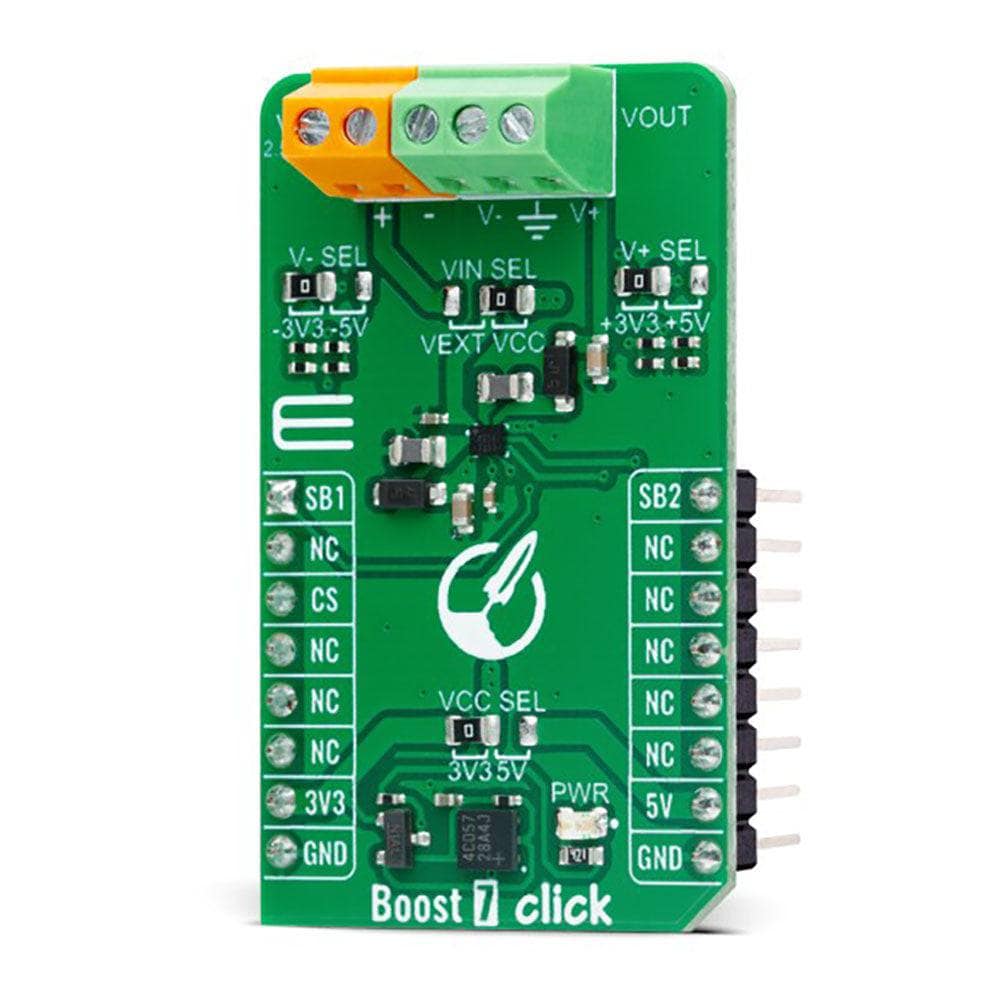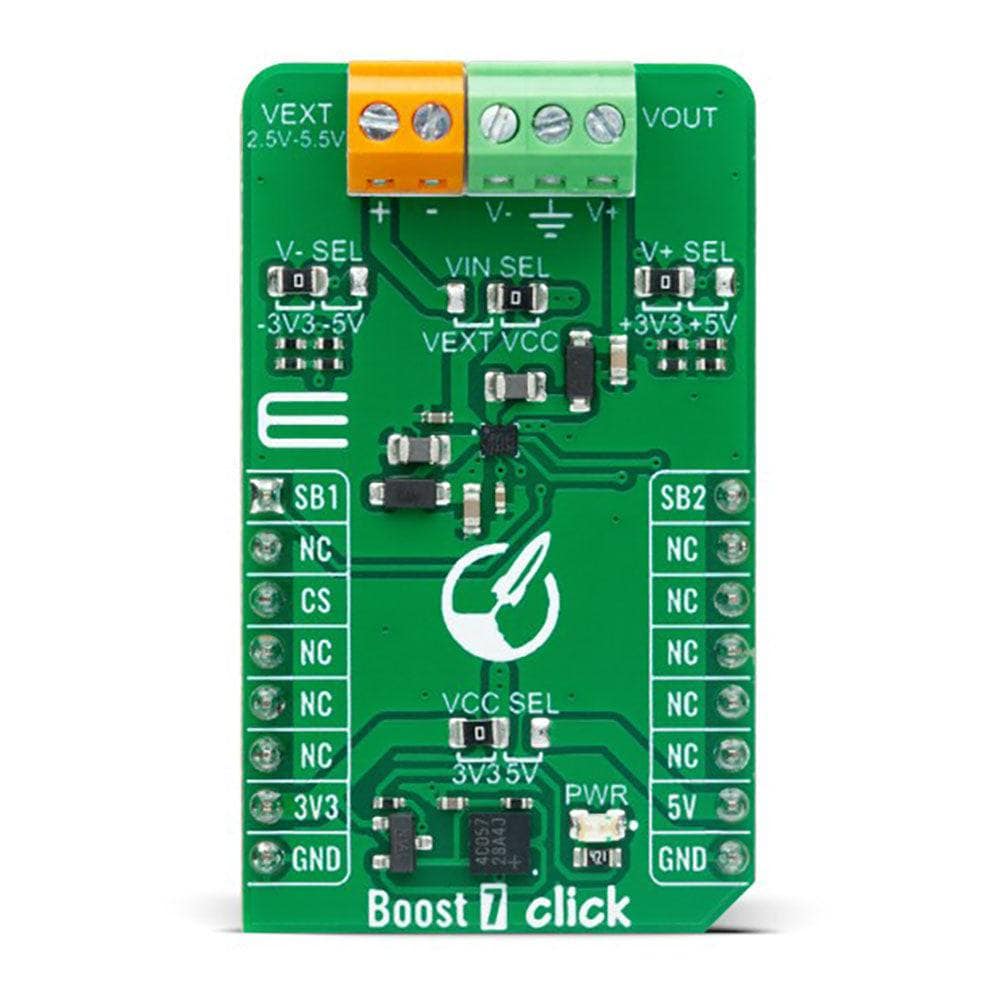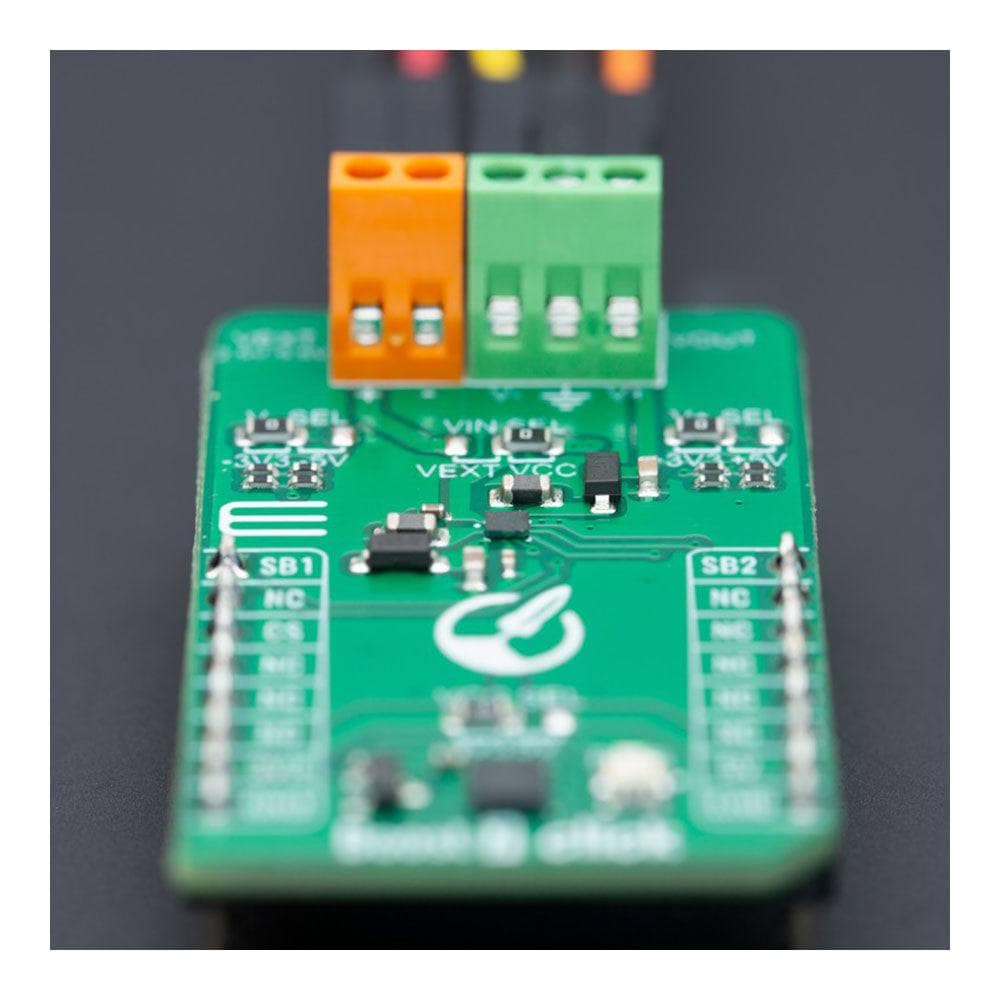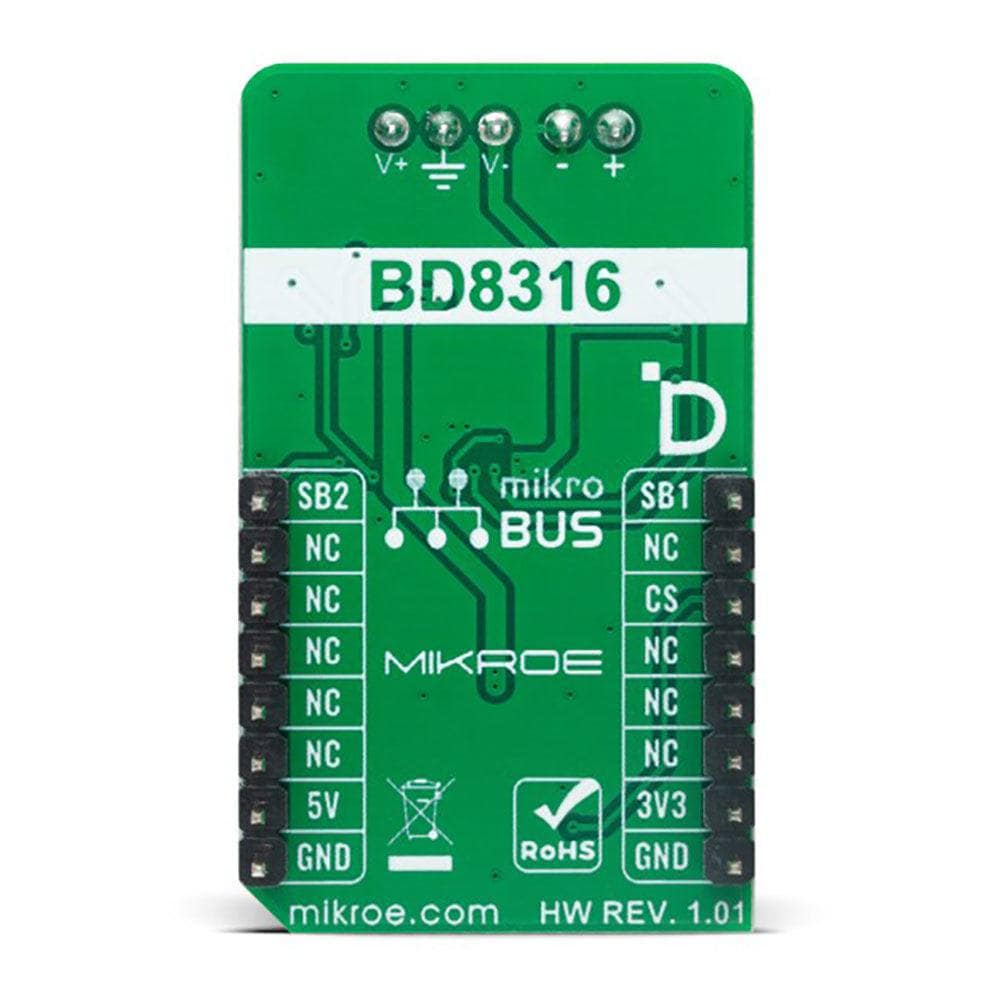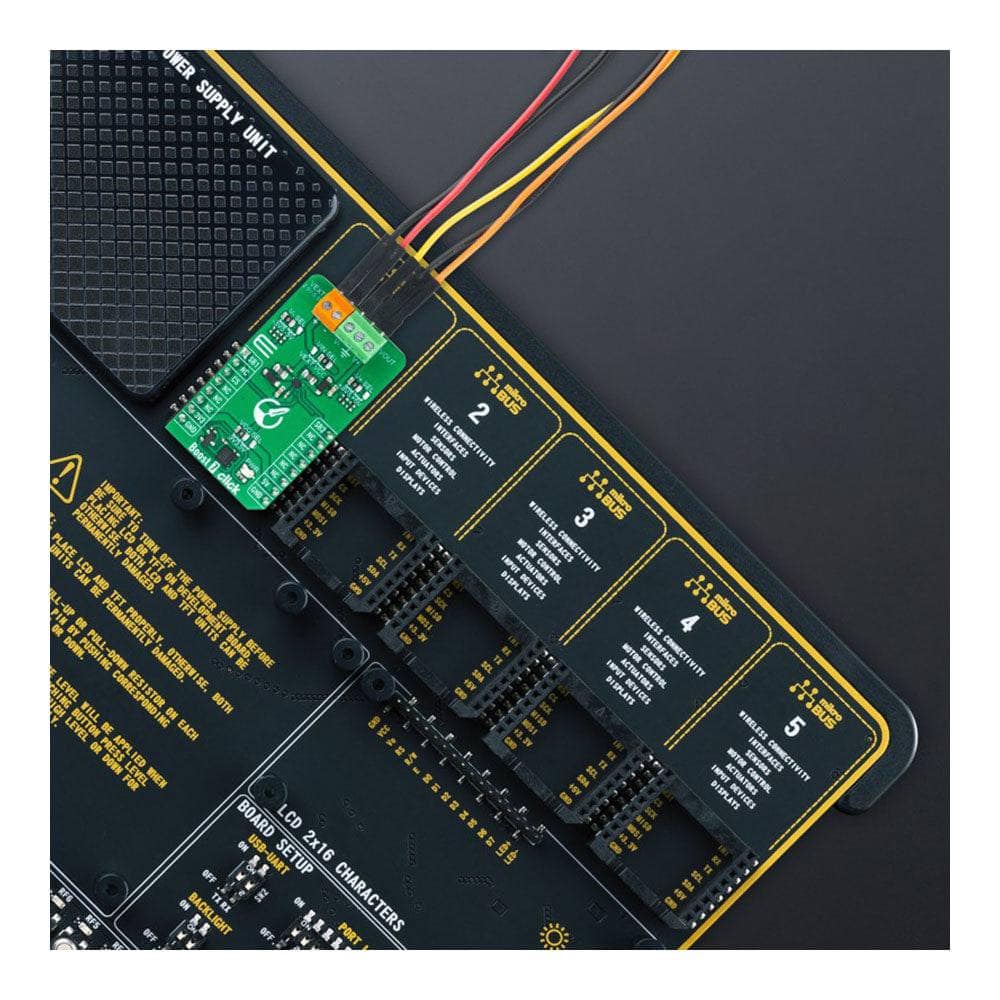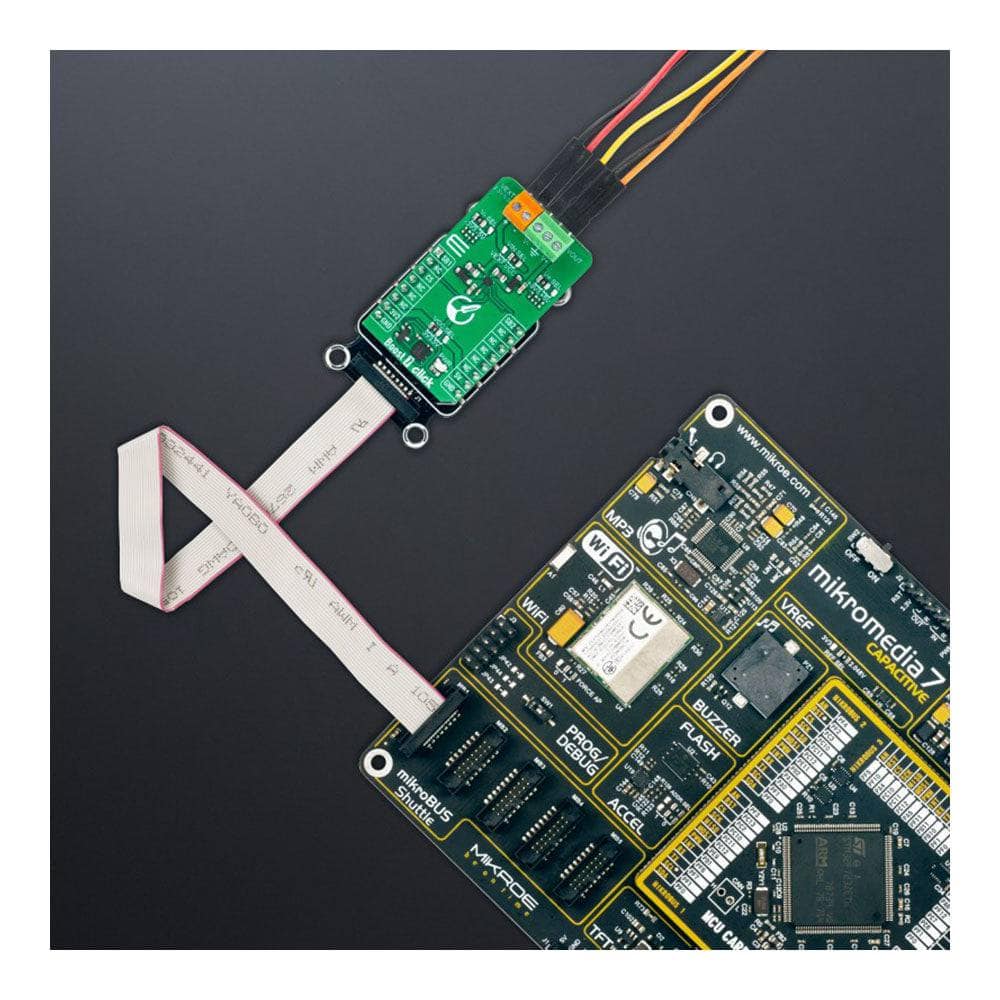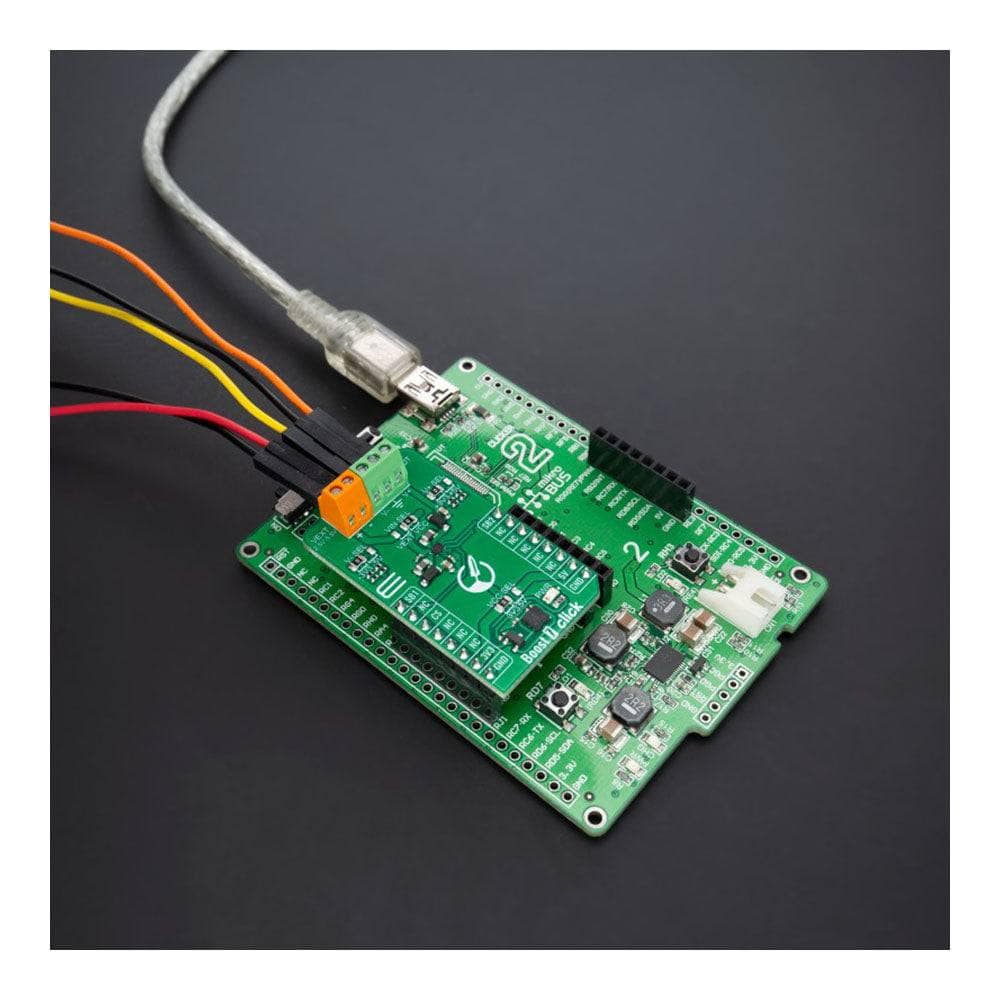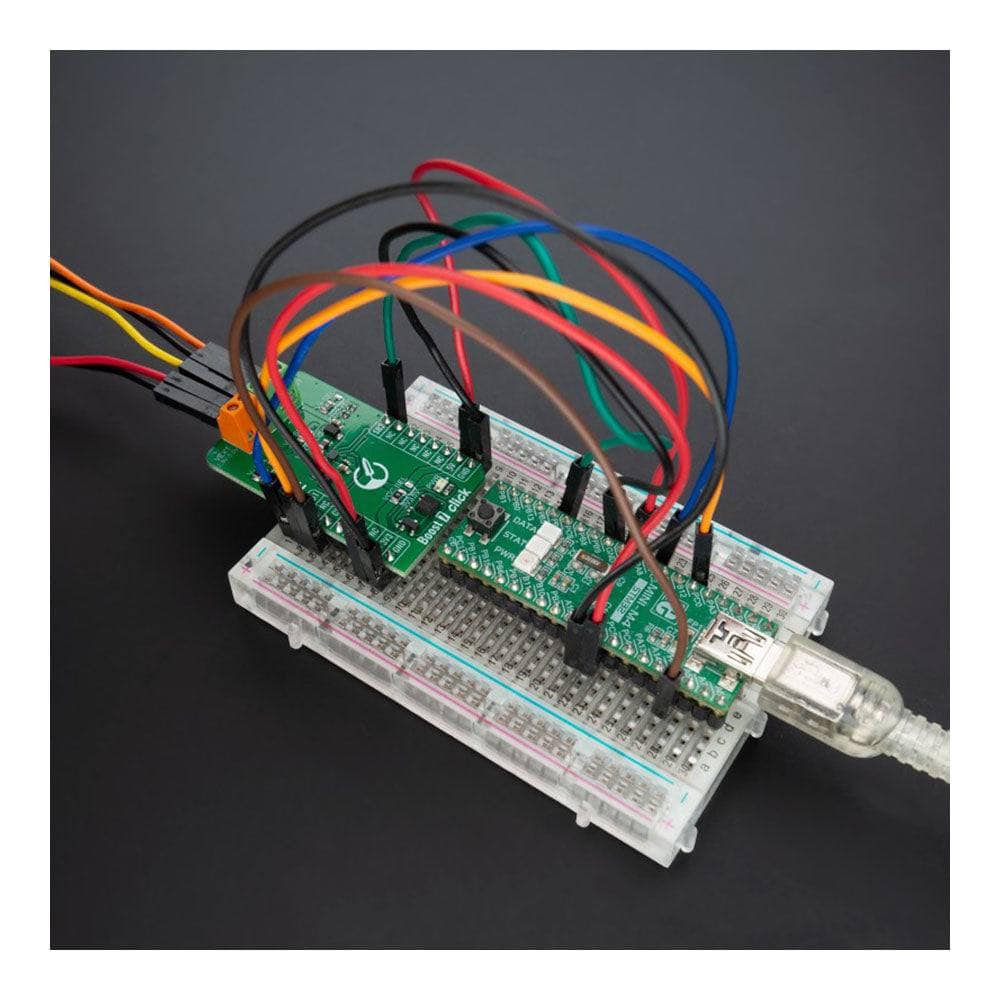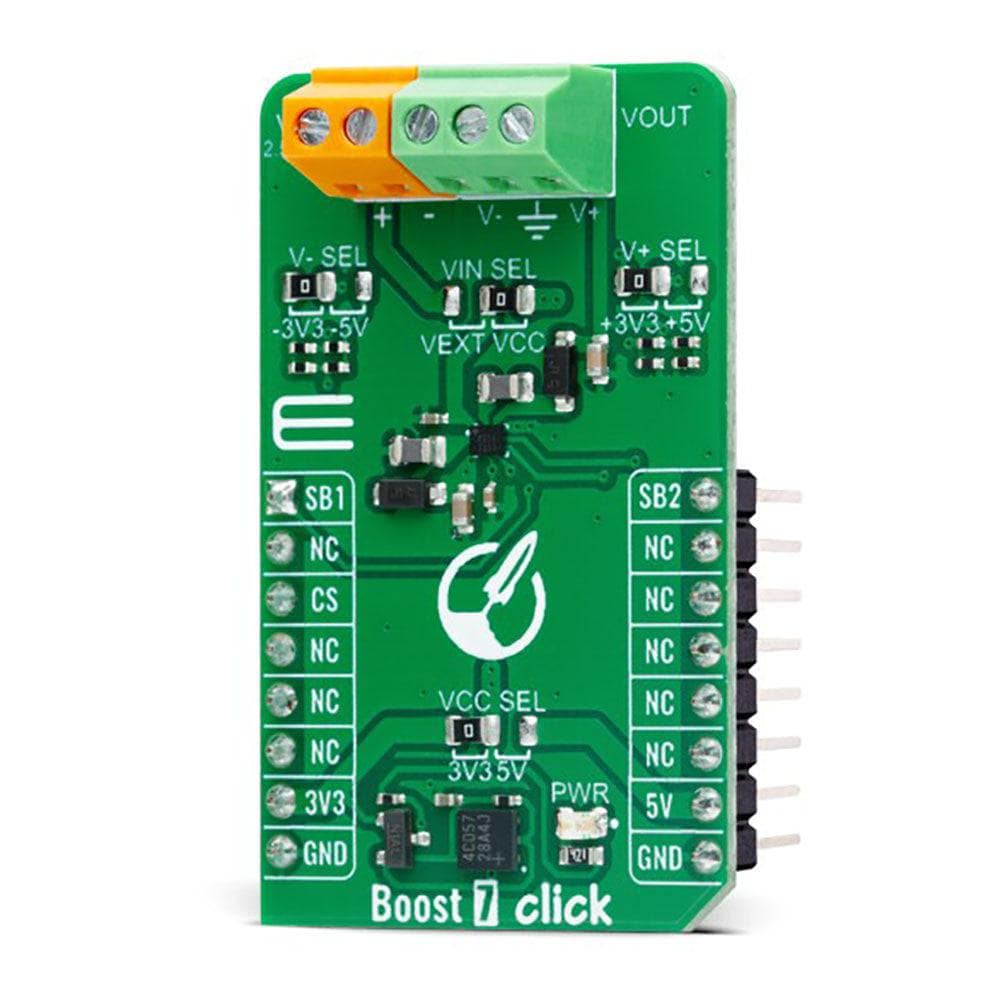
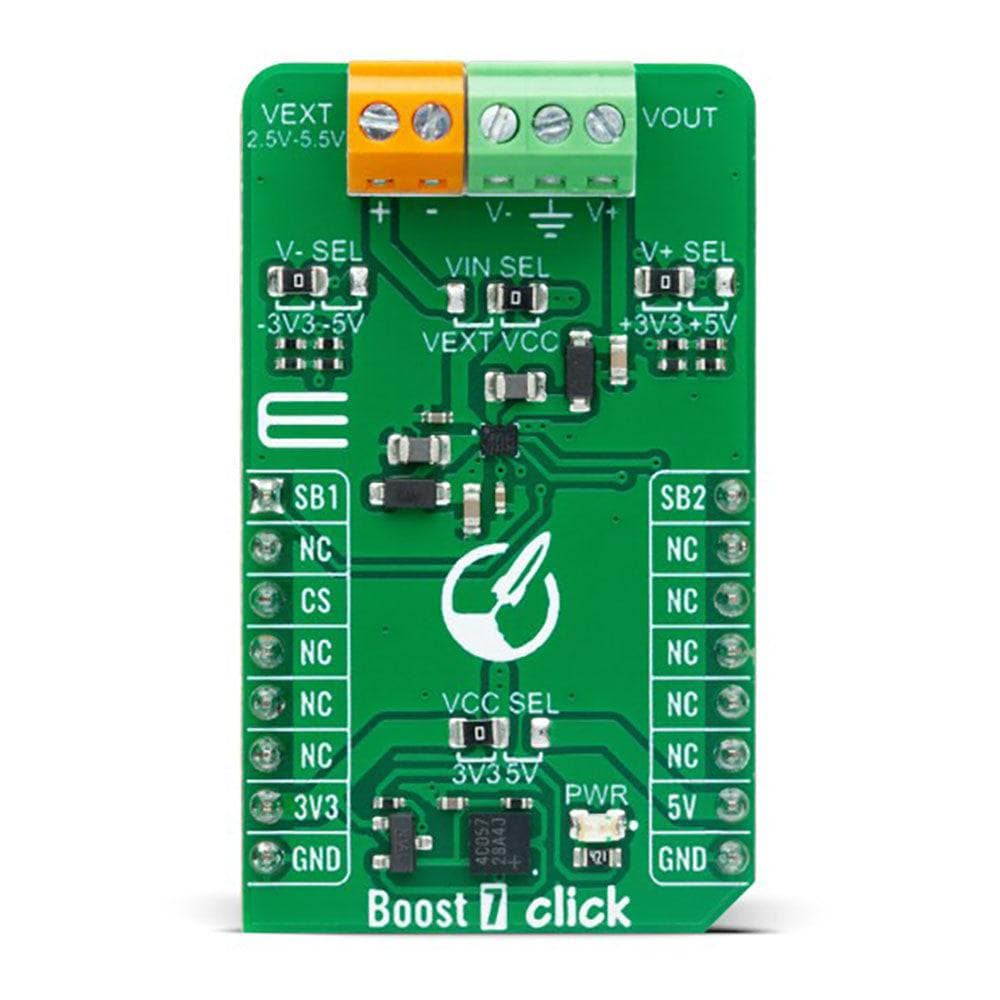
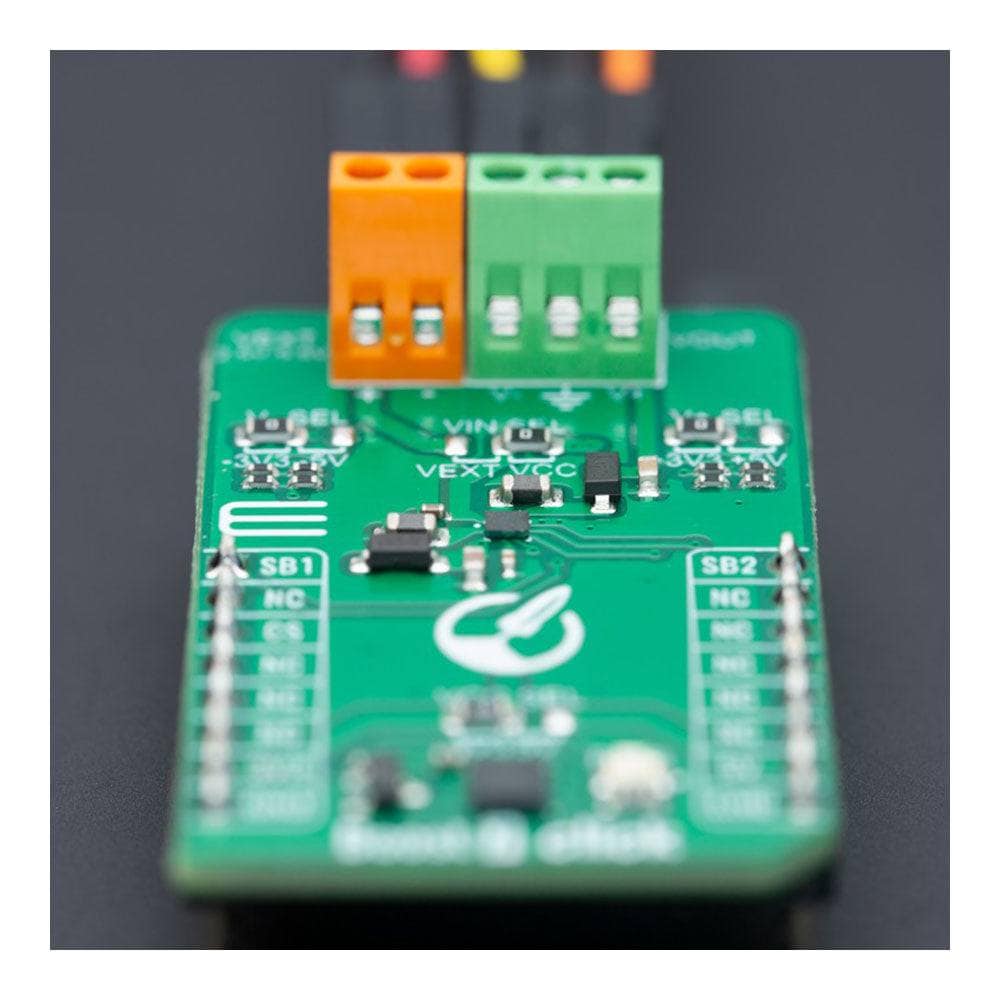
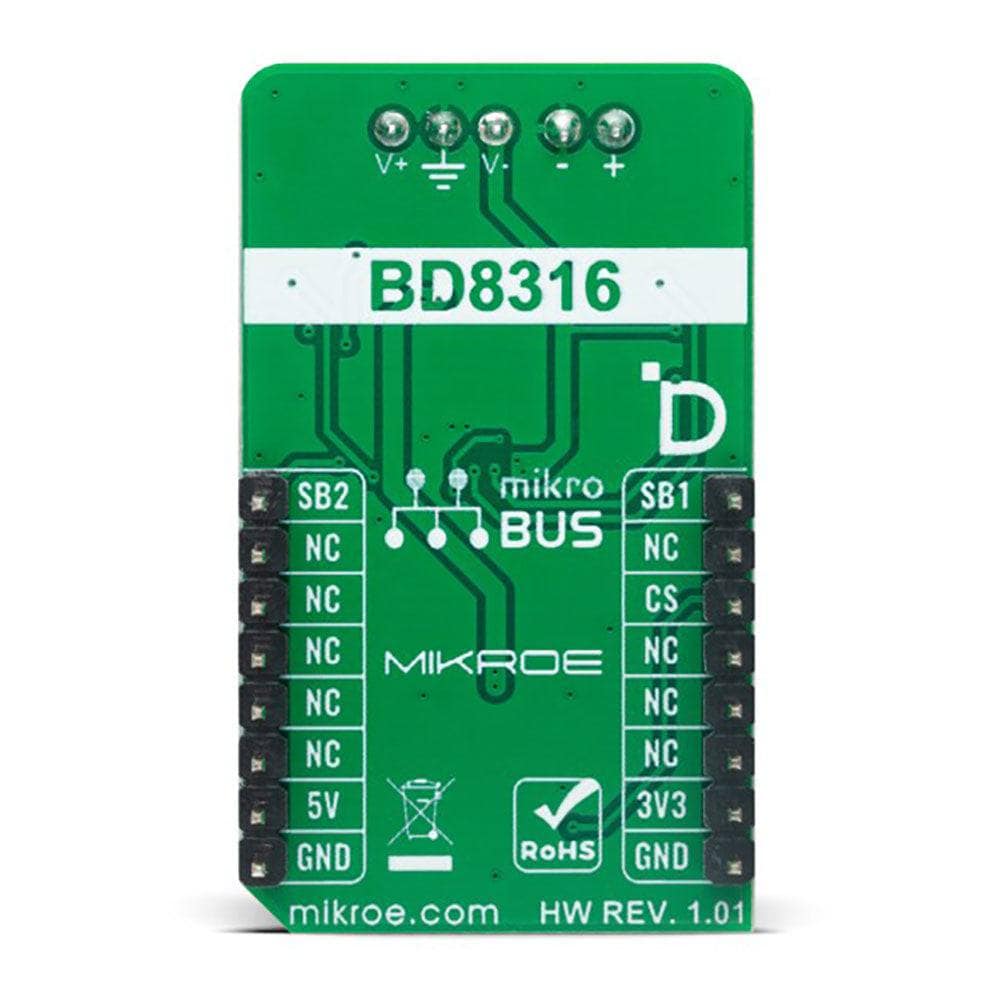
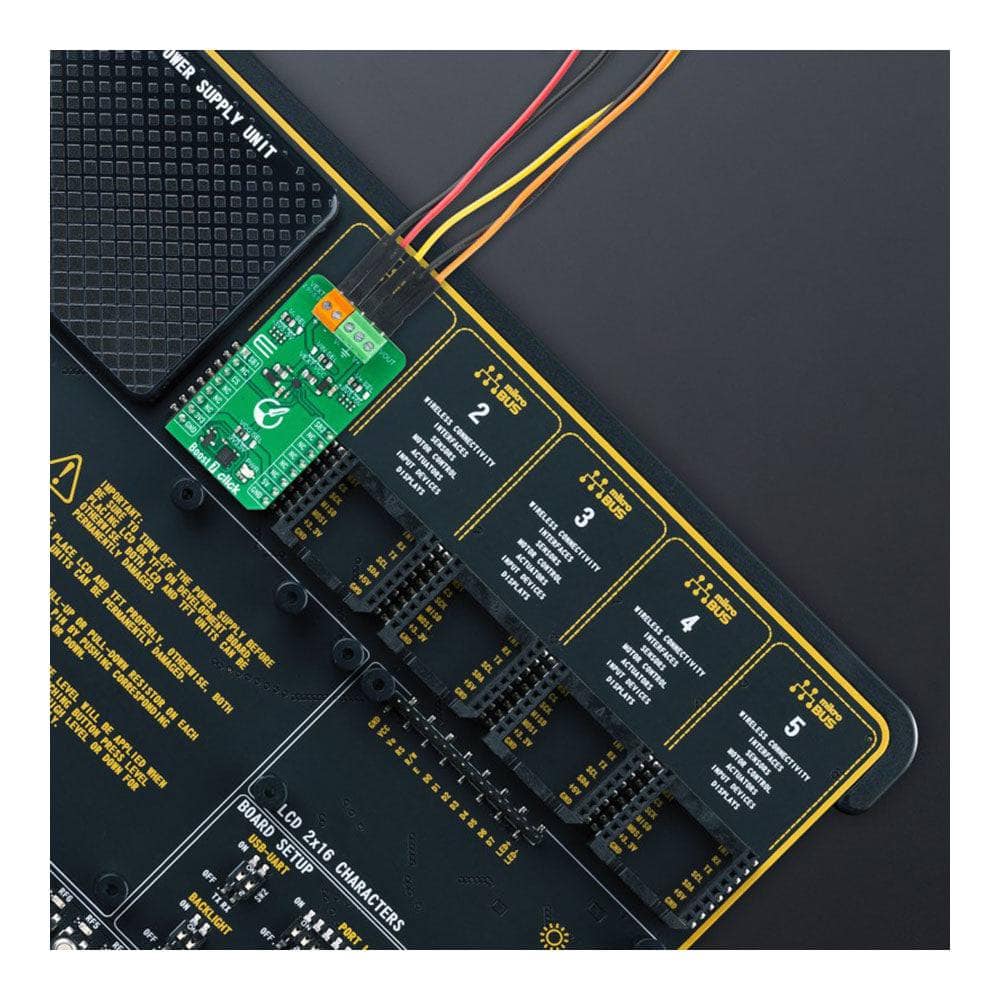
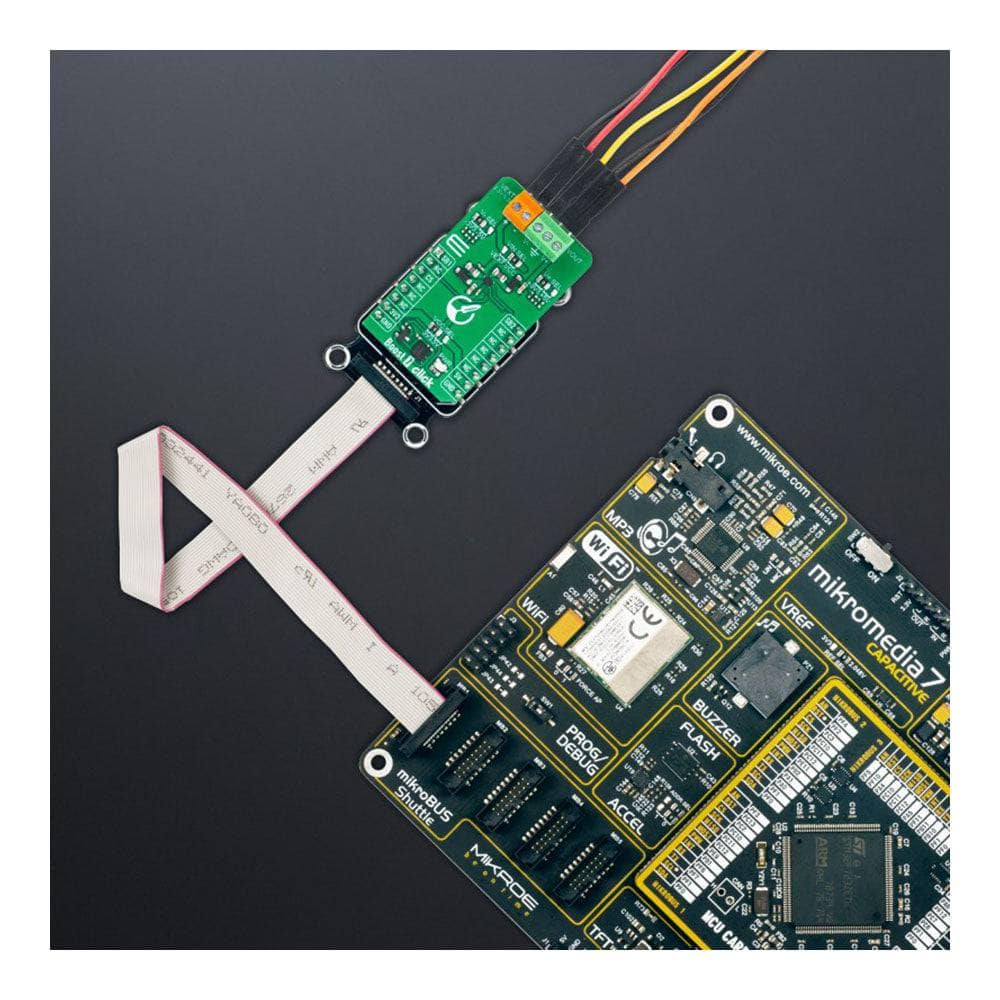
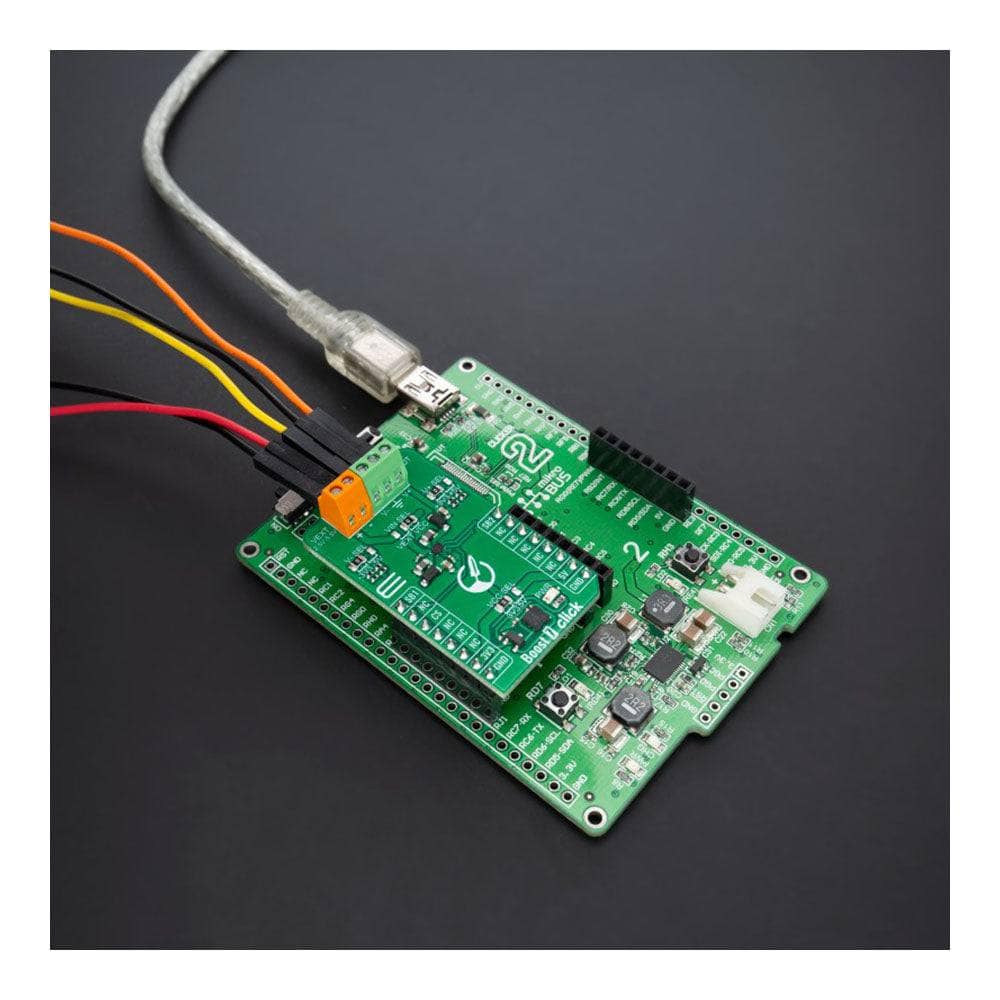
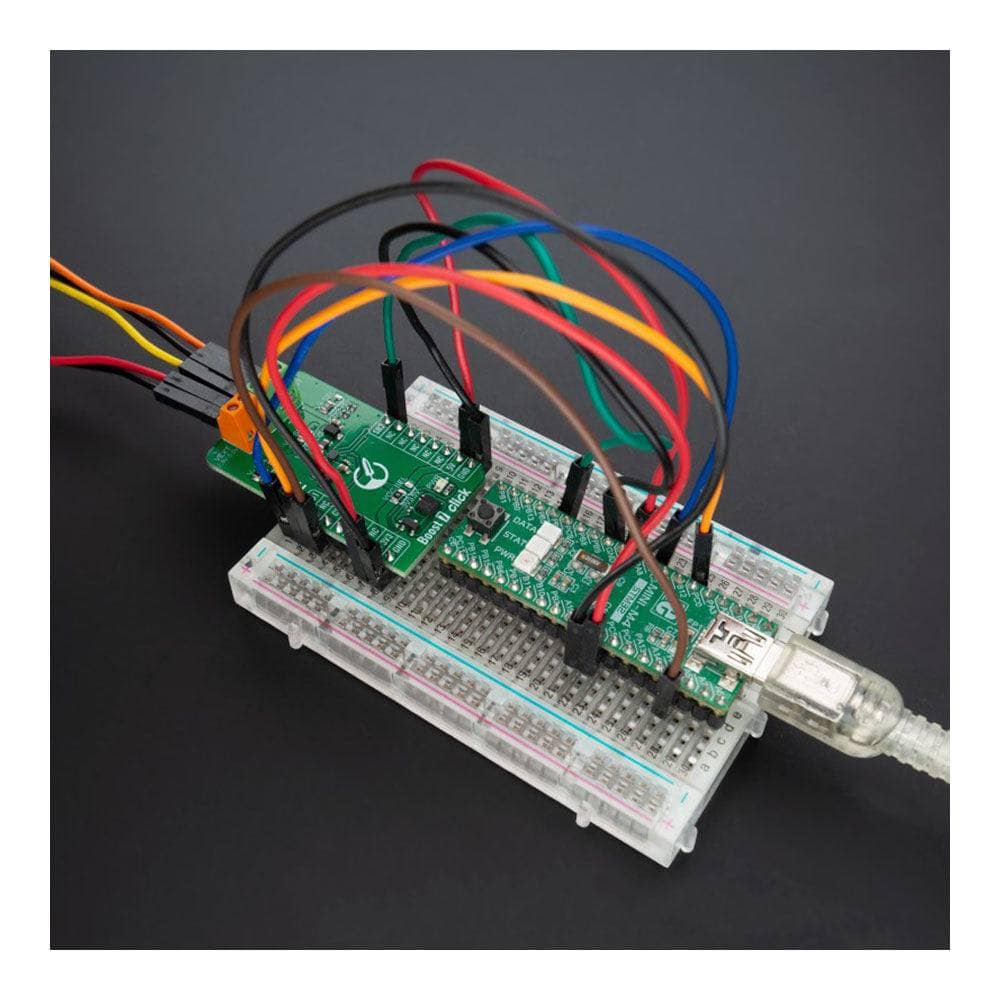
Key Features
Overview
Boost Your Voltage with the Boost 7 Click Board™
Looking to step up the voltage for your load? Look no further than the Boost 7 Click Board™, the compact add-on board that delivers reliable voltage regulation for a range of applications.
Powerful Performance, Minimal Footprint
Featuring the advanced BD8316GWL dual DC/DC converter from Rohm Semiconductor, the Boost 7 Click Board™ is designed to provide up to 200mA current limit and generate well-regulated positive and negative outputs of ±3.3V or ±5V. This makes it ideal for a wide range of applications that require split rail operating voltages.
Versatile Compatibility
The Boost 7 Click Board™ is compatible with both mikroBUS™ power rails and also supports external power supply with a very low voltage of 2.5V. This gives you the flexibility you need to power your load no matter where you are.
Simplified Software Development
With the mikroSDK-compliant library, software development for the Boost 7 Click Board™ has never been easier. Our library includes functions that simplify software development, so you can get up and running quickly and easily.
Ready to Use
The Boost 7 Click Board™ comes fully tested and ready to use on any system equipped with the mikroBUS™ socket. So why wait? Boost your voltage and power up your applications with the Boost 7 Click Board™ today!Downloads
Boostez votre tension avec le Boost 7 Click Board™
Vous souhaitez augmenter la tension de votre charge ? Ne cherchez pas plus loin que la Boost 7 Click Board™, la carte complémentaire compacte qui offre une régulation de tension fiable pour une gamme d'applications.
Des performances puissantes, un encombrement minimal
Doté du convertisseur DC/DC double avancé BD8316GWL de Rohm Semiconductor, le Boost 7 Click Board™ est conçu pour fournir une limite de courant jusqu'à 200 mA et générer des sorties positives et négatives bien régulées de ± 3,3 V ou ± 5 V. Cela le rend idéal pour une large gamme d'applications qui nécessitent des tensions de fonctionnement à rail divisé.
Compatibilité polyvalente
La carte Boost 7 Click Board™ est compatible avec les deux rails d'alimentation mikroBUS™ et prend également en charge une alimentation externe avec une très basse tension de 2,5 V. Cela vous donne la flexibilité dont vous avez besoin pour alimenter votre charge, où que vous soyez.
Développement de logiciels simplifié
Grâce à la bibliothèque compatible mikroSDK, le développement logiciel pour Boost 7 Click Board™ n'a jamais été aussi simple. Notre bibliothèque comprend des fonctions qui simplifient le développement logiciel, pour que vous puissiez être opérationnel rapidement et facilement.
Prêt à l'emploi
La carte Boost 7 Click Board™ est entièrement testée et prête à l'emploi sur tout système équipé de la prise mikroBUS™. Alors pourquoi attendre ? Boostez votre tension et alimentez vos applications avec la carte Boost 7 Click Board™ dès aujourd'hui !| General Information | |
|---|---|
Part Number (SKU) |
MIKROE-5575
|
Manufacturer |
|
| Physical and Mechanical | |
Weight |
0.02 kg
|
| Other | |
Country of Origin |
|
HS Code Customs Tariff code
|
|
EAN |
8606027385599
|
Warranty |
|
Frequently Asked Questions
Have a Question?
-
Is the Boost 7 Click Board™ ready to use?
Yes, the Boost 7 Click Board™ comes as a fully tested product, ready to be used on a system equipped with the mikroBUS™ socket.
-
What is the mikroSDK-compliant library for the Boost 7 Click Board™?
The Boost 7 Click Board™ is supported by a mikroSDK-compliant library, which includes functions that simplify software development.
-
What are the applications of the Boost 7 Click Board™?
The Boost 7 Click Board™ is used to step up an input voltage to some higher level required by a load, for various applications that require "split rail" operating voltages.
-
What is the voltage range of the external power supply that can be used with the Boost 7 Click Board™?
The Boost 7 Click Board™ provides the opportunity of using an external power supply with a very low voltage of 2.5V.
-
What is the current limit of each converter inside the BD8316GWL?
Each converter inside the BD8316GWL is designed with up to 200mA current limit.
-
What is the Boost 7 Click Board™?
The Boost 7 Click Board™ is an add-on board that steps up the voltage from its input (supply) to its output (load). It features the BD8316GWL, a dual DC/DC converter from Rohm Semiconductor, which is designed to generate well-regulated positive and negative outputs of ±3.3V or ±5V.

